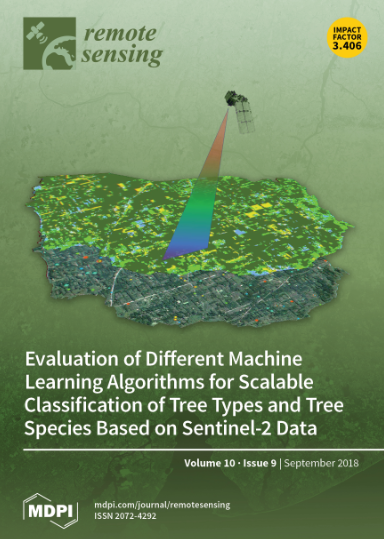利用多时相遥感和机器学习模型进行县级耕地质量评价:从国家标准的角度
IF 4.2
2区 地球科学
Q2 ENVIRONMENTAL SCIENCES
引用次数: 0
摘要
科学评估耕地质量(CLQ)对于促进耕地的合理利用和实现可持续发展目标(SDGs)之一非常必要:零饥饿。然而,以往研究提出的耕地质量评价体系多样,评价方法低效。本研究以我国首个国家标准《耕地质量等级》(GB/T 33469-2016)为基础,从地力状况、环境状况、理化性质、养分状况和田间管理五个方面选取 15 个指标,构建了统一的县级耕地质量评价体系,并采用德尔菲法计算了各指标的成员度。以山东省即墨区为例,比较了随机森林、AdaBoost、支持向量回归等三种机器学习模型在利用多时相遥感数据评价CLQ方面的性能。综合指数法用于揭示 CLQ 的空间分布。结果表明,基于多时相遥感数据和机器学习模型的CLQ评价高效可靠,评价结果与作物产量呈显著正相关(r为0.44,p<0.001)。耕地质量的高、中、差比例分别为 27.43%、59.37% 和 13.20%。研究区西部的耕地质量较好,而东部和中部的耕地质量较差。主要限制因素包括灌溉能力和纹理结构。据此,提出了一系列有针对性的措施和政策,如加强农田水利设施建设、土壤深耕、继续开展农田水利建设等。本研究提出了一种快速可靠的 CLQ 评价方法,其结果有助于促进耕地保护,保障粮食安全。本文章由计算机程序翻译,如有差异,请以英文原文为准。
County-Level Cultivated Land Quality Evaluation Using Multi-Temporal Remote Sensing and Machine Learning Models: From the Perspective of National Standard
Scientific evaluation of cultivated land quality (CLQ) is necessary for promoting rational utilization of cultivated land and achieving one of the Sustainable Development Goals (SDGs): Zero Hunger. However, the CLQ evaluation system proposed in previous studies was diversified, and the methods were inefficient. In this study, based on China’s first national standard “Cultivated Land Quality Grade” (GB/T 33469-2016), we constructed a unified county-level CLQ evaluation system by selecting 15 indicators from five aspects—site condition, environmental condition, physicochemical property, nutrient status and field management—and used the Delphi method to calculate the membership degree of the indicators. Taking Jimo district of Shandong Province, China, as a case study, we compared the performance of three machine learning models, including random forest, AdaBoost, and support vector regression, to evaluate CLQ using multi-temporal remote sensing data. The comprehensive index method was used to reveal the spatial distribution of CLQ. The results showed that the CLQ evaluation based on multi-temporal remote sensing data and machine learning model was efficient and reliable, and the evaluation results had a significant positive correlation with crop yield (r was 0.44, p < 0.001). The proportions of cultivated land of high-, medium- and poor-quality were 27.43%, 59.37% and 13.20%, respectively. The CLQ in the western part of the study area was better, while it was worse in the eastern and central parts. The main limiting factors include irrigation capacity and texture configuration. Accordingly, a series of targeted measures and policies were suggested, such as strengthening the construction of farmland water conservancy facilities, deep tillage of soil and continuing to construct well-facilitated farmland. This study proposed a fast and reliable method for evaluating CLQ, and the results are helpful to promote the protection of cultivated land and ensure food security.
求助全文
通过发布文献求助,成功后即可免费获取论文全文。
去求助
来源期刊

Remote Sensing
REMOTE SENSING-
CiteScore
8.30
自引率
24.00%
发文量
5435
审稿时长
20.66 days
期刊介绍:
Remote Sensing (ISSN 2072-4292) publishes regular research papers, reviews, letters and communications covering all aspects of the remote sensing process, from instrument design and signal processing to the retrieval of geophysical parameters and their application in geosciences. Our aim is to encourage scientists to publish experimental, theoretical and computational results in as much detail as possible so that results can be easily reproduced. There is no restriction on the length of the papers. The full experimental details must be provided so that the results can be reproduced.
 求助内容:
求助内容: 应助结果提醒方式:
应助结果提醒方式:


